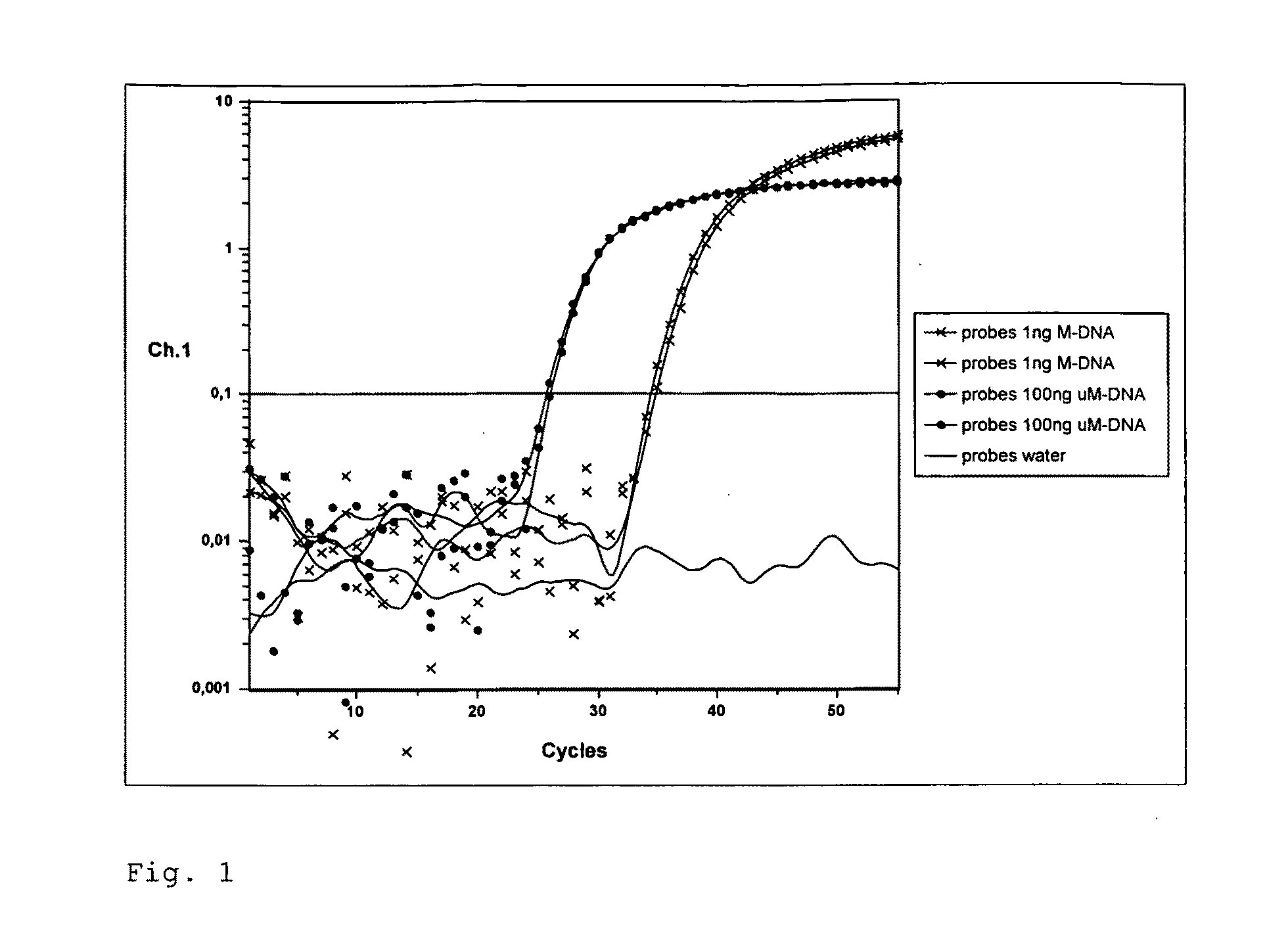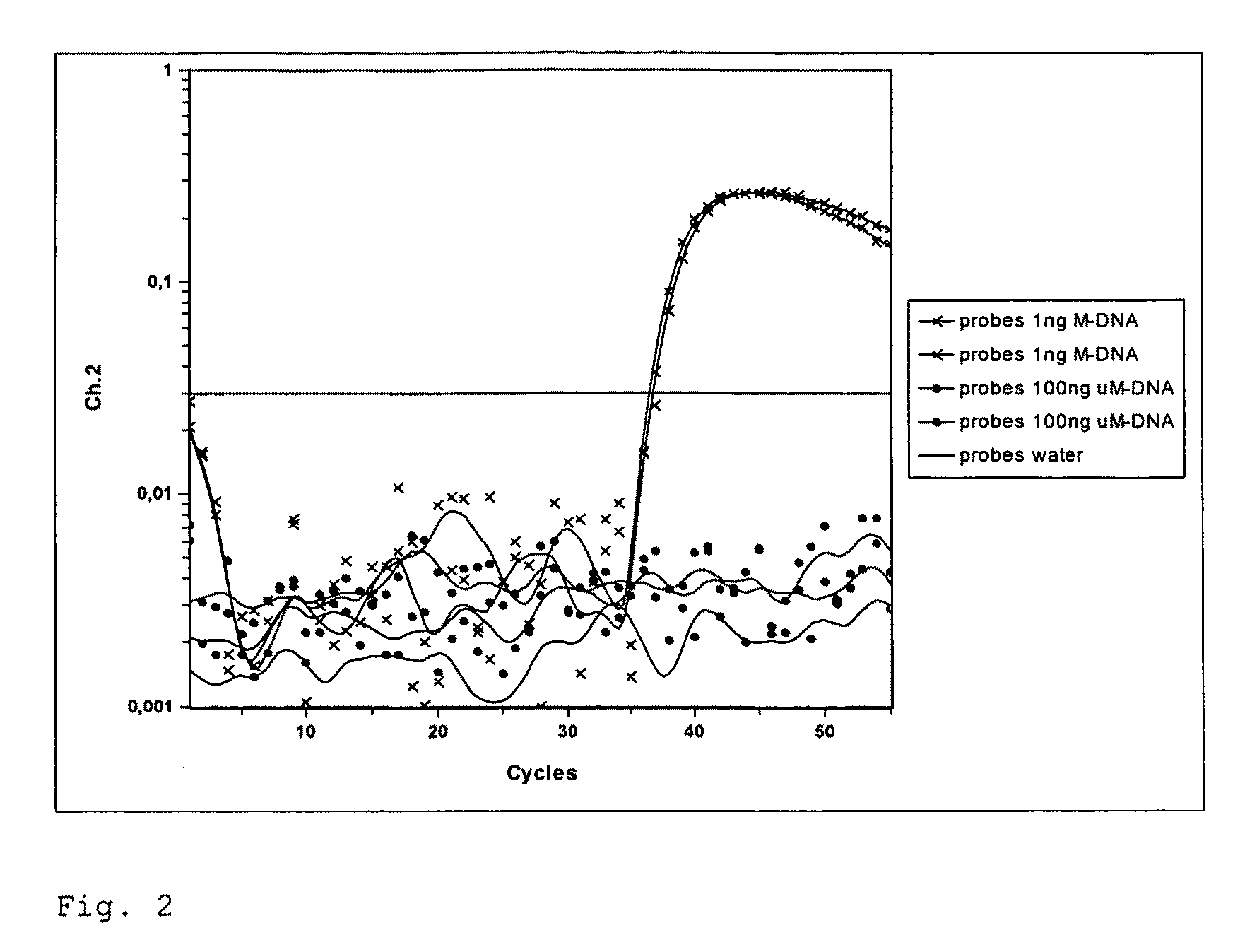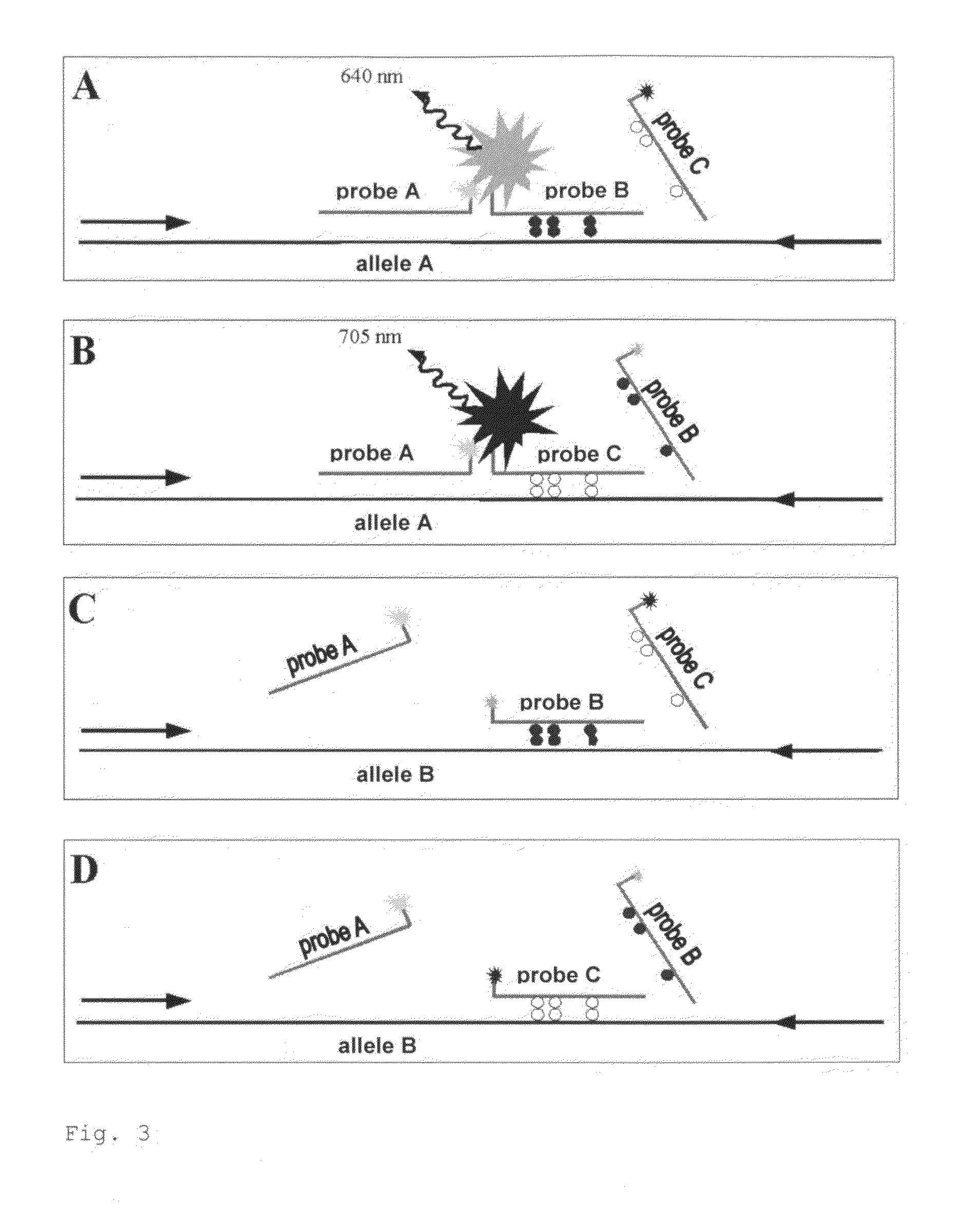Method for the Quantification of Methylated DNA
- Summary
- Abstract
- Description
- Claims
- Application Information
AI Technical Summary
Benefits of technology
Problems solved by technology
Method used
Image
Examples
example 1
[0107]Dual-Color Real Time PCR for the Detection of Methylated DNA in the IGF2 Gene of Mouse with Simultaneous Detection of Total DNA via the Application of the Method According to the Invention
[0108]In the present example, a Real Time PCR is carried out for the detection of methylated bisulfite-converted DNA. The chromosomal mouse DNA (Promega Corporation) is methylated genome-wide using SssI methyltransferase. Unmethylated control DNA is produced through genome-wide amplification using phi29 Polymerase (GenomiPhi-Kit, Amersham). Methylated and unmethylated DNA are treated with sodium bisulfite and subsequently, desulfonated with sodium hydroxide (method according to patent WO 2005 / 038051). Using bisulfite specific primer (SEQ ID NO: 1, SEQ ID NO: 2), a 161 bp long sequence of the IGF2 gene from mouse (SEQ ID NO: 5, NT—039437.4, nt909691-nt909851) is amplified with a Lightcycler system. The use of a 5′-fluorescence- und 3′-BHQ1-modified probes (SEQ ID NO: 3) serves to detect the to...
example 2
[0127]Allele-Specific Quantitative Methylation Measurements Using Real Time PCR
[0128]The example describes the measurement of a proportion of methylated DNA in a region of the IGF2 gene of mouse using allele-specific QM assay. The QM assay technology (Patent PCT / EP2005 / 003793) is based on the collective amplification of methylated and unmethylated bisulfite-converted DNA in Real Time PCR, whereby the detection takes place with two distinctly labeled methylation-specific probes. The signals for methylated and unmethylated DNA are detected at different wavelengths and interpreted, according to the patented method (PCT / EP2005 / 003793). Using calibration of the measured values with defined DNA-mixtures of methylated and unmethylated DNA, the percentages of methylated DNA of the examined region are computed. The present example demonstrates that through the application of a second allele-specific probe (SEQ ID NO: 8 and SEQ ID NO: 9), measurement of methylation, at any one time, of one of...
PUM
| Property | Measurement | Unit |
|---|---|---|
| Angle | aaaaa | aaaaa |
| Mass | aaaaa | aaaaa |
| Mass | aaaaa | aaaaa |
Abstract
Description
Claims
Application Information
 Login to View More
Login to View More - R&D
- Intellectual Property
- Life Sciences
- Materials
- Tech Scout
- Unparalleled Data Quality
- Higher Quality Content
- 60% Fewer Hallucinations
Browse by: Latest US Patents, China's latest patents, Technical Efficacy Thesaurus, Application Domain, Technology Topic, Popular Technical Reports.
© 2025 PatSnap. All rights reserved.Legal|Privacy policy|Modern Slavery Act Transparency Statement|Sitemap|About US| Contact US: help@patsnap.com



